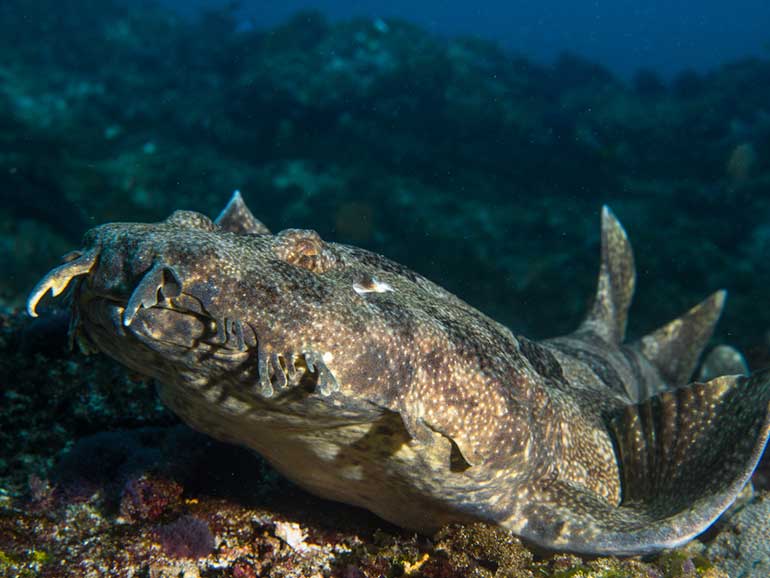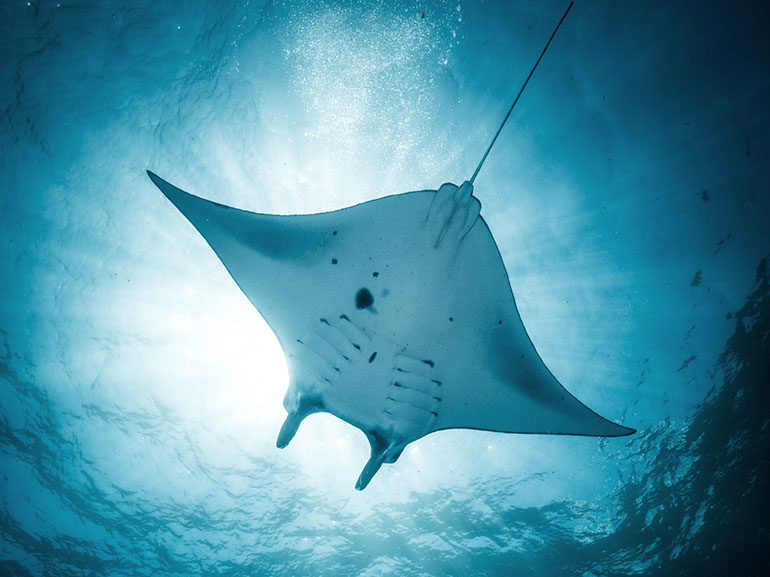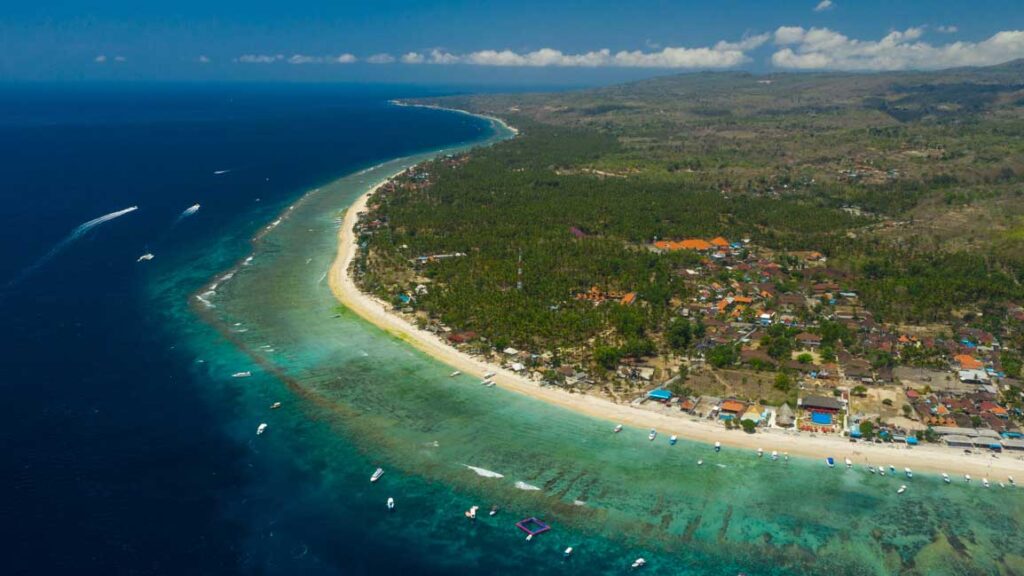
The very short answer to the question "is there a Nusa Penida diving season" would be no… The diving is fantastic here all year round. There are, however, two very distinct seasons in terms of the water temperature. We experience a cold water season and a warm water season, so we're going to explore when those seasons are, what the water temperatures are like during those seasons and what marine life you can expect to see.
Nusa Penida lies very close to one of the exit points for the Indonesian Throughflow Current (ITC), the Lombok Strait. The ITC is the largest movement of water on the planet, and is the pathway of the water moving between the Pacific Ocean and the Indian Ocean. The direction of the current switches each year, and it is at the time of this current switch that the changes in water temperature happen giving us the Nusa Penida diving seasons.
During the months of June to October, it is Nusa Penida's cold diving season, and this may be what people are referring to when they talk about "the Nusa Penida diving season".

Temperatures are generally colder, changeable and can vary from dive site to dive site. How cold…? Well, that depends where you are around the island! On the south and in the channel sites, the temperatures can be consistently colder and range from 18-25 degrees C. The channel sites can also experience thermoclines, which are sharp and sudden changes in temperature. Sometimes the thermocline can have a difference of ten degrees! The coldest months are August to October.
On the north and east sites the temperatures are little kinder, with temps ranging from 22-26 degrees during these months, but there is always the potential for thermoclines.
Visibility during the cold season is excellent AT 20-30m+, especially in the thermoclines! On the southern dive sites the vis can be lower, at around 10m on average during this season.
Nusa Penida's most famous aquatic visitors -MOLAS, like the cold water! Molas ("mola mola" / "sunfish" / "moonfish") frequent our dive sites for cleaning during this season, and this is the best season to see them.
Other visitors during the cold season include thresher sharks and wobbegong sharks, which we see often. We also have more frequent sightings of dolphins during these months and have even seen tiger sharks on a few occasions.
Due to the lower water temperatures, we recommend to wear a warmer wetsuit than you would usually wear in the tropics. We have 5mm long wetsuits in our rental stock. You may wish to add more layers such as a thermal rash guard, a hooded vest (chicken vest) or a diving hood if you feel the cold more easily. Some of our guests have worm their own 7mm wetsuits during this period and felt comfortable in them. As a guide, our staff usually wear a 5mm long suit with a hooded vest underneath. Gloves are not permitted in line with our environmental policy.
You may want to bring a windbreaker or a hoodie on the dive boat for the surface intervals and the drive back.
The cold water diving season in Nusa Penida is considered our "winter", but it is still hot and sunny during the day with temperatures around 30 degrees C, but it is less humid and there is a refreshing breeze! At night times it's cooler than the warm season, and temperatures have been known to drop to 22 degrees. This is our dry season, so rain showers are uncommon during these months.
This is Bali's peak visitor season, so you can expect the island to be generally busier and we recommended to book in advance for diving packages.
During the months of November to May it is Nusa Penida's warm diving season, you can expect the temperatures to be comparable to what you experience elsewhere in the tropics.

Typically temperatures are between 26-29 degrees C, which is very comfortable. Visibility during these months is usually 15-20m on the north, east and channel sites, and around 15m on the south. In our experience, the best conditions at the manta sites are during the warm season.
The vast majority of Nusa Penida's incredible marine life is not seasonal, which means that you can see it in both the cold and the warm seasons. This includes the impressive manta rays, bamboo sharks, our big population of green and hawksbill turtles and all of the usual suspects around the reefs such as trevally, tuna, napoelon wrasse, snappers and fusiliers plus lots more. Macrolife is abundant all year round at our dive sites, too.
It's not impossible to see molas during the warm season, but you do need a bit more luck.
Manta ray mating activity usually peaks in May, so combined with the great conditions at the manta sites, the warm season is an excellent time to come and dive with mantas.
Wear whatever dive gear you would usually wear in the tropics… As a point of reference, for some that's board shorts and a rash guard, for others it's a shorty or maybe a 3mm full suit.
The warm water season is considered to be our "summer". Both the days and the nights are hot and humid, and this is also Bali's wet season. Usually we experience rain from December to March, but most of the rain that we get is overnight or perhaps a short, sharp shower during the day. There is still plenty of sun during this season so it is still a great time to visit, and this is considered the low season for Bali, so overall visitor numbers are lower.


